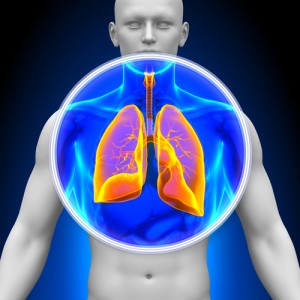 While for the majority of individuals mucus is just a substance in the lungs made to clear bacteria, viruses, and foreign particles out of the lungs, for patients with cystic fibrosis, mucus can lead to serious health problems. A group of researchers at the University of Iowa found a specific defect in the process of mucociliary transport, a way of removing microbes and dust trapped in mucus from the lungs, in a pig model of cystic fibrosis. Their findings are published in Science: “Impaired Mucus Detachment Disrupts Mucociliary Transport in a Piglet Model of Cystic Fibrosis.”
While for the majority of individuals mucus is just a substance in the lungs made to clear bacteria, viruses, and foreign particles out of the lungs, for patients with cystic fibrosis, mucus can lead to serious health problems. A group of researchers at the University of Iowa found a specific defect in the process of mucociliary transport, a way of removing microbes and dust trapped in mucus from the lungs, in a pig model of cystic fibrosis. Their findings are published in Science: “Impaired Mucus Detachment Disrupts Mucociliary Transport in a Piglet Model of Cystic Fibrosis.”
The impaired mucus movement can be directly linked to the loss of function of the CFTR protein that underlies cystic fibrosis. “Now that we know more about what we are up against in cystic fibrosis, we can direct our research,” said Mark Hoegger, first author of the study and a student in the Medical Scientist Training Program, in a news release from the university.
Already, in the present study, the team discovered the means by which mucus leaves the lungs. Long strands of mucus emerge from specialized glands found below the airway surface. These mucus strands, which are normally swept into the throat, are trapped in the lungs of cystic fibrosis patients and because the strands cannot properly detach from the gland.
“If you can’t clear mucus out of the airway properly, the airway can get plugged up making it very difficult to breathe, and that’s what we see in people with cystic fibrosis,” said Tony Fischer, MD, PhD, a study author and pediatric pulmonary fellow with University of Iowa Children’s Hospital.
The team’s findings required hard work and dedication from all fronts. Pediatric and internal medicine pulmonologists, molecular biologists, biomedical engineers, and imaging specialists collaborated on the project. “Mark was nocturnal and I was diurnal,” stated Dr. Fisher. “Which meant we could continue our experiments 24/7.”
[adrotate group=”3″]
Such a large effort was required because a new way of visualizing airway mucus was necessary for the team’s discoveries. High-tech confocal microscopes, CT scanners, and 3D image analysis–as well a $5, stop-motion-capture application on an iPhone–were used to visualize particle movement across an airway surface. Watching the particles move revealed sticking when the particles were moving across excess mucus. Further analysis with fluorescent nanospheres showed strands and blobs of mucus that remained attached to the airway surface specifically at the opening of mucus glands.
“When you look at these pictures and videos you understand very quickly what is going on, and as scientists we were very excited about these discoveries,” said Hoegger. “But after seeing that the mucus is not properly detaching from the airways, we reflected on the challenges that this creates for people with cystic fibrosis.”
Hopefully, the team’s research will benefit patients with cystic fibrosis, as well as patients with mucus abnormalities in other organs such as the gastrointestinal tract and the pancreas and with diseases such as asthma and chronic obstructive pulmonary disease. “We can try to figure out ways to prevent these mucus strands from forming to begin with, and we can figure out ways to detach tethered mucus that has already formed,” concluded Hoegger.

